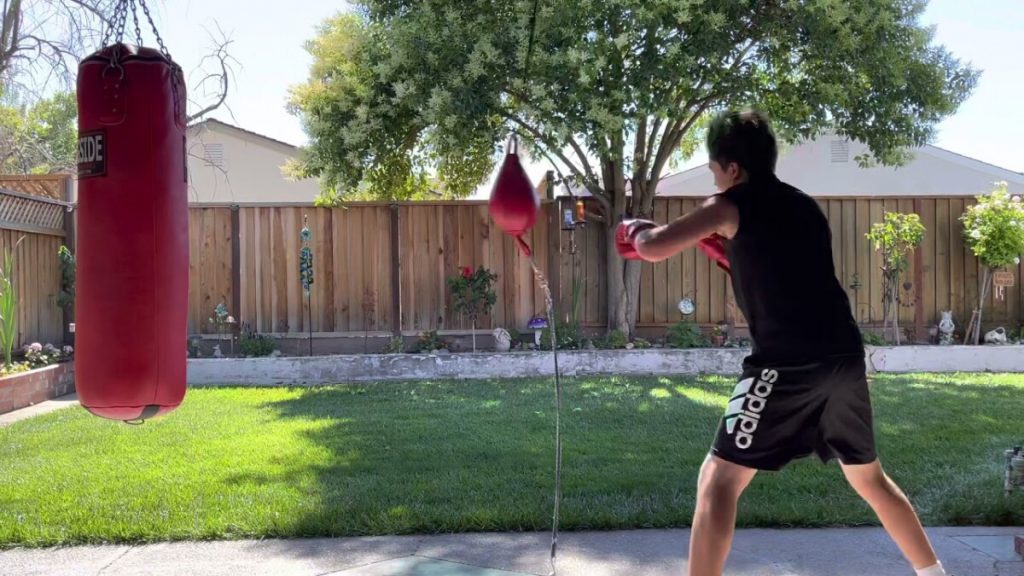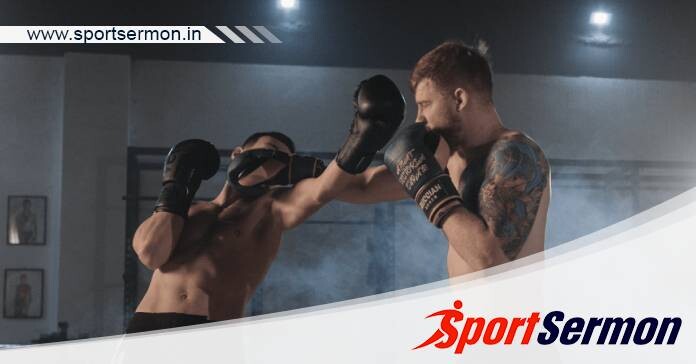Boxing Counterstriking: There are many different methods in boxing, but being able to punch without getting struck is the ultimate skill. This is the fundamental idea of counterstriking, which aims to penalise an opponent after forcing them to miss. By approaching boxing like a game of chess, boxing counterstriking adopts an intellectual approach to the sport. A competent counter-attacker can handle any blow from their opponent in a variety of ways, occasionally using certain punches to provoke a certain response. With pleasure, we will present a tutorial on counterstriking for boxers today.
Clean Technique

You have to learn how to box cleanly before you can counterstrike more effectively. You may make your counterpunches land harder and prevent your opponent from expecting you and hitting you with a counterattack by maintaining good punch form. You can move more quickly by using textbook boxing form, which involves creating the shortest path possible between your fists and your target.
Combining several striking techniques, such as hip drive, hip rotation, flipping your fists over, and maintaining balance with a strong core, results in perfect form in boxing. When you turn your punches over, you mean to turn your wrists and knuckles inside at the conclusion of a straight blow. Irrespective of their particular style, boxers should all understand this since it serves several benefits. By rotating your wrists, you may maximise harm to your opponent and minimise injury to your own hand by aligning your index and middle knuckles to make contact. Additionally, by doing this, you avoid elbow flare, which reduces the efficacy of your boxing in general.
When your elbows leave your body, it’s known as an elbow flare and might reveal when you plan to punch. In addition, it puts you at risk of overextending your elbow if you miss and makes it simpler for your opponents to parry or block your blow. By locking your elbow before you hyperextend, you may turn your punch over and unleash full-force blows without worrying about self-harm. In addition, you have the ability to hit directly between the gloves of your opponent as opposed to attacking from an unfavourable angle.
Turning your punches over makes it harder for your opponent to block, parry, or avoid them since they are now coming at them in a straight line without any indication of when they are going to land.
The bulk of your striking power comes from your hip drive. It is the ability to propel your entire body forward or backwards, enabling you to throw a punch with all of your weight. Because they have greater bulk to propel forward with, heavyweights strike so much harder than flyweights for this reason, among others.
Turning your hips to face your wrist and shoulder is known as hip rotation. This enhances the kinetic chain’s energy transmission and adds to the punch’s snap. Hip drive, which initiates the weight transfer, should be the first movement in every punch. Rotate your hips and turn your punch over to give it a last burst of acceleration. When punching, facing a mirror is a simple approach to make sure you are rotating and driving your hips correctly, as well as to see if you are timing your strikes correctly.
You might also be interested in reading this: How To Cut Off The Ring in Boxing?
Footwork
Training fluid, smooth movement is the next crucial step in mastering counterstrikes for boxing. The purpose of footwork is to maintain your distance and position yourself to strike an opponent while denying them the same chance. The type of footwork you should rehearse the most depends depend on your desired fighting range and boxing technique. Your natural physical advantages, such as a tall boxer with long arms, are enhanced by boxing from the outside in this situation. You can keep your opponent at a distance with your long, straight punches and circular footwork thanks to your physical attributes, which eliminates the necessity for shoulder-to-shoulder fighting.
In order to be fluid, taller fighters tend to be lighter on their feet and avoid planting their heels. Eastern European boxers have footwork that matches their longer limbs and typically higher stature. They adopt a more bladed posture and wait for a chance to strike a strong cross before shutting down an opponent with their jab from the outside using pendulum steps and lateral skips. Two of the best examples of elusive outboxers who use lateral movement and pendulum steps are Vasiliy Lomachenko and Oleksandr Usyk.
On the other hand, fighters who want to knock out opponents would rather square off inside, in the pocket. To get a positional advantage over their opponents, infighters employ footwork such as stepping, shifting, and even stance-switching in place of pendulum steps and lateral skips. When facing an opponent with an open stance, Manny Pacquiao would frequently take advantage of the angles it presented to execute his signature split entry cross. This is where he stepped to his right, slipped to avoid a jab, and unleashed a left cross along his opponent’s centerline. Given that the jab is a fundamental part of many boxers’ fighting style, he was able to neutralise his opponents by taking away one of their main weapons.
After he launched his cross, Pacquiao also advanced into an orthodox posture in order to maximise the force of his next lead-hand blow. While changing stances is often frowned upon in boxing gyms, Pacquiao utilised it to surprise a lot of opponents and close the distance more quickly than they had anticipated.
Another fighter who switches stances to improve their counterstrike capability is Terrance “Bud” Crawford. Crawford developed his southpaw stance in the same manner as he did his orthodox stance boxing training. This allowed him to change his position entirely in the middle of combat. By doing this, he would frequently utterly confuse his opponents, who had spent much of the battle adjusting to the strikes and angles that his orthodox posture produced.
Against Errol Spence Jr., Crawford deliberately opted to fight from the southpaw position. Crawford was able to counterpunch his way to a knockout victory because of his ability to change stances, which distracted Spence and took him off balance.
Double-Ended Bag

One of the greatest instruments for practising boxing counterstriking is the double-end bag. The double-end punching bag moves, in contrast to conventional punching bags, so you have to be precise while dodging or blocking return fire. The double-end bag may be utilised to enhance your overall boxing conditioning and to practise timing for certain counterpunches. The double-end bag is a terrific tool for learning to time your punches, but it’s also great for developing your speed.
Timed perfectly, power is produced and speed is beaten. The key to counterpunching well is timing. Your counterattacks won’t work even if you are lightning-fast and strike like a truck if you can’t time them to coincide with your opponent’s defensive weaknesses.
In summary
Boxing counterstriking is a complex topic; the information above just touches the surface. Basic counterstriking requires many hours of training, but once mastered, it will significantly improve your boxing. During your next sparring session, include some of the counters and the above-discussed strategies in your training!

